
Verification of the Nazca Lines and the Height of Daidarabocchi
In October 2020, the Ministry of Culture of Peru designated it a World Heritage Site.Nazca Lines" A new geoglyph of a feline has been discovered on a hill near the site.

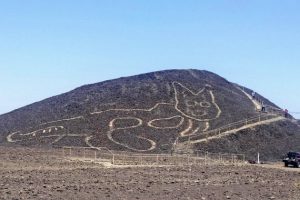
The painting is about 37 meters long and is drawn with lines about 30 to 40 centimeters wide. It is thought to date to the late Paracas culture around 200 BC, which predates the Nazca culture.
Cats are said to have been a commonly used motif during this period, and many people are soothed by the cute yet amateurish appearance of these cats.
The Mystery of the Nazca Lines
Many of the Nazca Lines are so large that it is said that it is difficult to grasp the entire picture of most of them unless viewed from the air. One of the great mysteries is why such huge lines were drawn.
There are many theories as to why the Nazca Lines were drawn, including that they were used for rain-making rituals, that they were related to the calendar (showing the direction of sunset), that they were for social work, that they played a role in pilgrimages, that they indicated the source of water, that they were the burial grounds of powerful people, or that they were a takeoff and landing site for UFOs, but none of these theories have been conclusively proven.
Meanwhile, progress is being made in understanding the drawing method, and in a demonstration experiment by Professor Masato Sakai of Yamagata University, a Christian statue of the Virgin Mary measuring over 30 metres in size was created on the side of a mountain.
The Nazca Lines: Theories that they were drawn by ghosts
Although progress is being made in unraveling the mystery surrounding the Nazca Lines, they remain shrouded in mystery. Here, however, I would like to propose the theory that they were drawn by spirits.
There are many giant monsters, but among them, there are many legends.DaidarabochiI would like to verify this based on (Daitarobo and Daitahoshi).

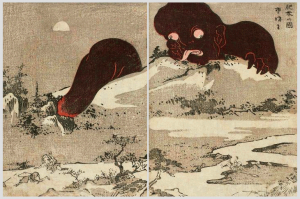
Verifying Daidarabochi's height
There are many legends about Daidarabochi, and the size of Daidarabochi varies greatly depending on which legend is used as the basis. Here, we will consider three patterns.
① Daidarabocchi, the creator of Mount Fuji
One of the most famous legends about Daidarabocchi is that he dug up soil in Omi and piled it up to create Mount Fuji. The excavated area became Lake Biwa, and the dirt that was dropped while transporting the soil became the mountains between Mount Fuji and Lake Biwa.
Mount Fuji has an altitude of 3,776m.
To give a simple example, if an adult male who is 170 cm tall wants to build a fairly large sand dune in a sandbox, he can build a dune that is about 38 cm high.
From this, we can infer that the distance for Daidarabocchi in pattern 1 would be around 17,000m (17km).

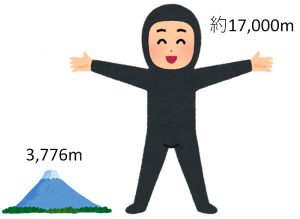
② Daidarabocchi leaves footprints on Daita
Daita in Setagaya Ward, Tokyo is a popular residential area close to Shimokitazawa and Sangenjaya, but it is a depression in the ground, and it is said to be the footprint left by Daidarabochi.
The area of Daita is 1.36 km2. Since the exact area of the depression is unknown, we will assume it is 1.1 km square.
Assuming that the average foot size of an adult male is 27cm and his height is 170cm, if we calculate the height of the Daidarabocchi, whose footprints are 1.1km long, to be about 6.9km. This is pattern 2.
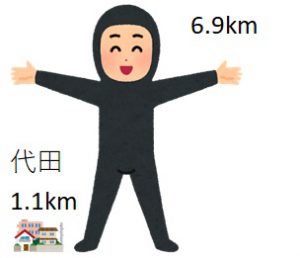
③Daidarabocchi, a mountain with a depression on its summit
At the summit of Mt. Dairabo in Shizuoka City, there is a depression about 150 meters long, which is said to be the mark where Daidarabocchi placed his left foot, and is said to have been left behind while carrying soil from Lake Biwa to Mt. Fuji. This Daidarabocchi seems to be smaller than pattern ①.
As with pattern ②, if we assume that the foot size of an adult male is 27cm and the height is 170cm, and the footprints are 150m long, the height of the Daidarabocchi is about 944m, or about 1km.
For your information, Mount Fuji is 3,776 meters above sea level, so he built a mountain that was about four times his height. This is hard work, but considering that it took a long time to build a country, it may not be an impossible feat.

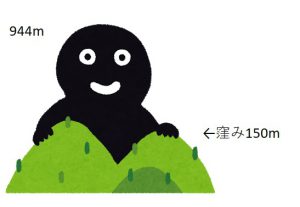
A summary of patterns 1 to 3.

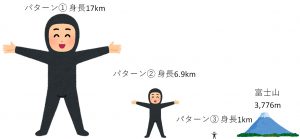
Comparison with the Nazca Lines
Now let's take a look at the size of the Nazca Lines.
The famous painting of a hummingbird is 96m, larger ones are a condor at 135m and an iguana at 180m, others are a monkey at 55m and a spider at 46m, and the largest is a bird at 285m.
For ease of understanding, let's consider this to be a picture of about 100m based on the standard of a hummingbird.
Regarding Daidarabocchi's height, drawing a 100m picture with his height of 17km (pattern 1) is like a person who is 170cm tall drawing a 1cm picture.
The Nazca Lines are not a particularly complicated design, so it's not impossible, but it would be a bit of a delicate task.
It is hard to imagine Daidarabocchi, who undertook huge projects like building Mount Fuji, doing such detailed work.
If we consider pattern 2, a 100m drawing for a height of 6.9km would be the same scale as a person who is 170cm tall drawing a picture that is approximately 2.5cm in size.
This isn't impossible, but it seems a bit tricky.
In pattern ③, 100m for a height of about 1km would result in a picture of about 17cm for a height of 170cm.
Even the relatively small drawings of monkeys and spiders are around 5cm in scale, so I feel like even someone as clumsy as Daidarabocchi could draw them.

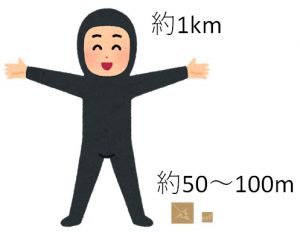
By the way, Shin Godzilla is 118.5 meters in size, so even the Daidarabocchi in pattern ③ would be eight times the size of Godzilla.

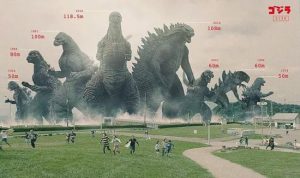
Can you see how big Daidarabochi is?
This time, based on the premise that the Nazca Lines were drawn by the Daidarabochi, we will examine the size of the Daidarabochi based on local legends.
Some may criticize that the premise is flawed to begin with, but I hope that it will help you have fun imagining yokai.
Image: Katsukawa Shun'ei's "Imawa Takekashi" "Ichibozu, Hizen Province", Irasutoya, Toho, Hideaki Anno, general director "Shin Godzilla"
References: "The Definitive Japanese Yokai Encyclopedia: Yokai, the Other World, and Gods" (Mizuki Shigeru, Kodansha Bunko), "Japanese Yokai Encyclopedia" (Mizuki Shigeru, Murakami Kenji, Kadokawa Bunko)
Text by Keijiro Watanabe
■ Keichan Watanabe
Born in Asahikawa, Hokkaido. Graduated from the School of Human Sciences at Waseda University. An independent researcher of yokai. IT coordinator, Certified Information Systems Auditor (CISA), and Project Management Professional (PMP).
He currently works as a management and IT consultant, residing in Sapporo, Hokkaido, and traveling throughout the prefecture and Tokyo. However, he studied folklore and cultural anthropology at university, and continues to research yokai as his life's work.
I am currently writing articles about monsters associated with Hokkaido, where I currently live, as well as current news about business and economics.
Twitter:https://twitter.com/keishiro_w


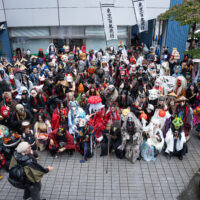

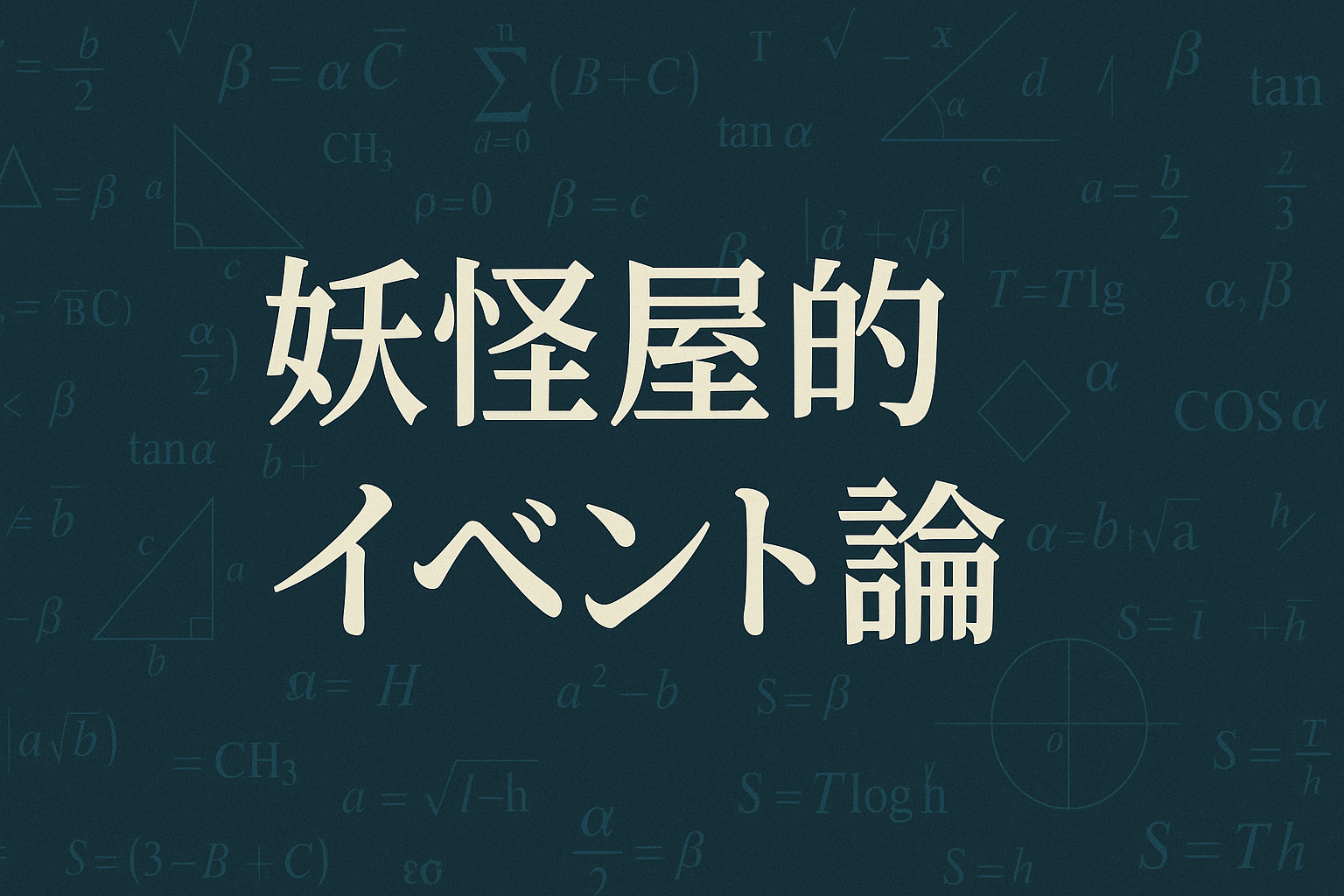



No comments yet.